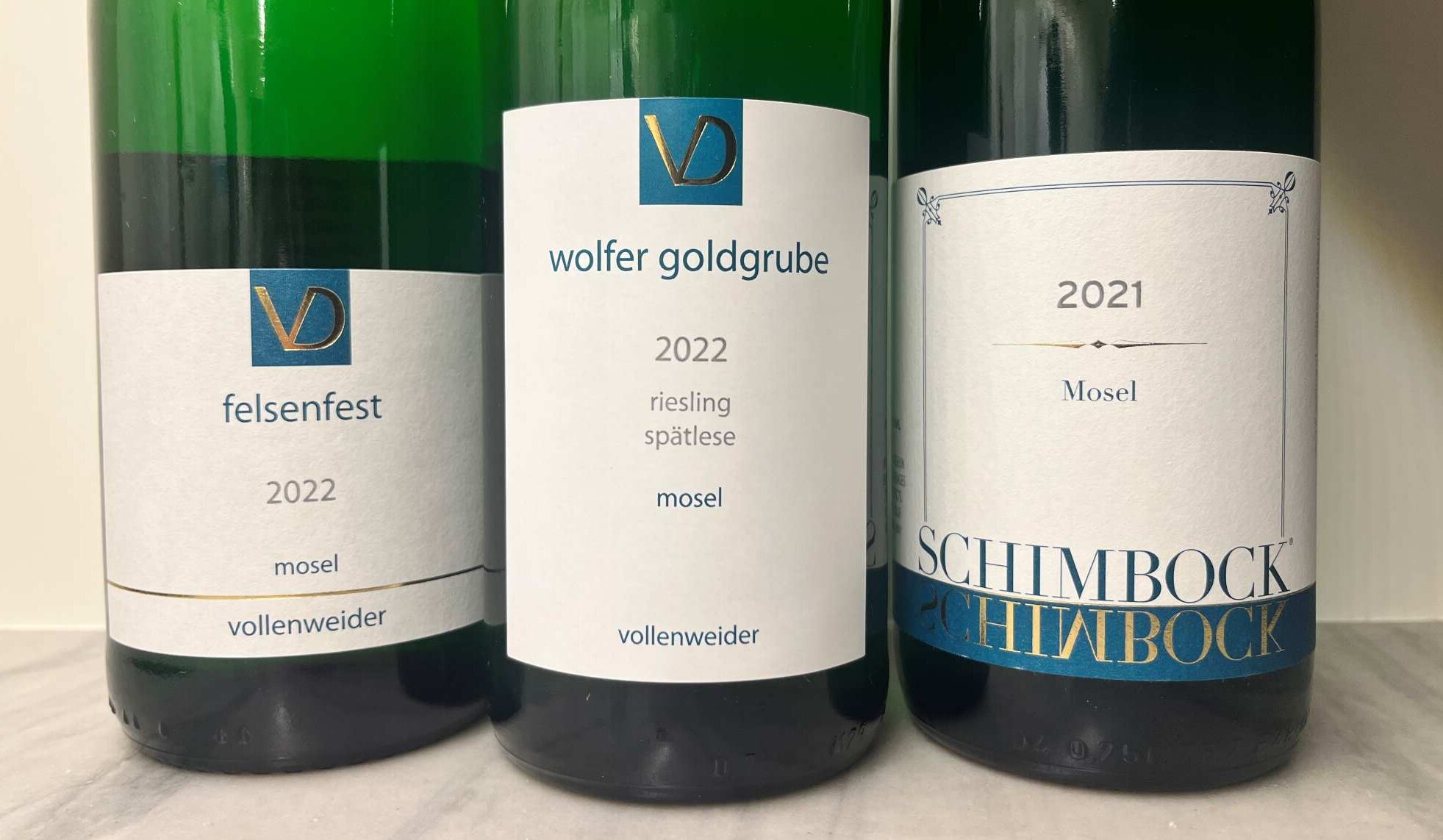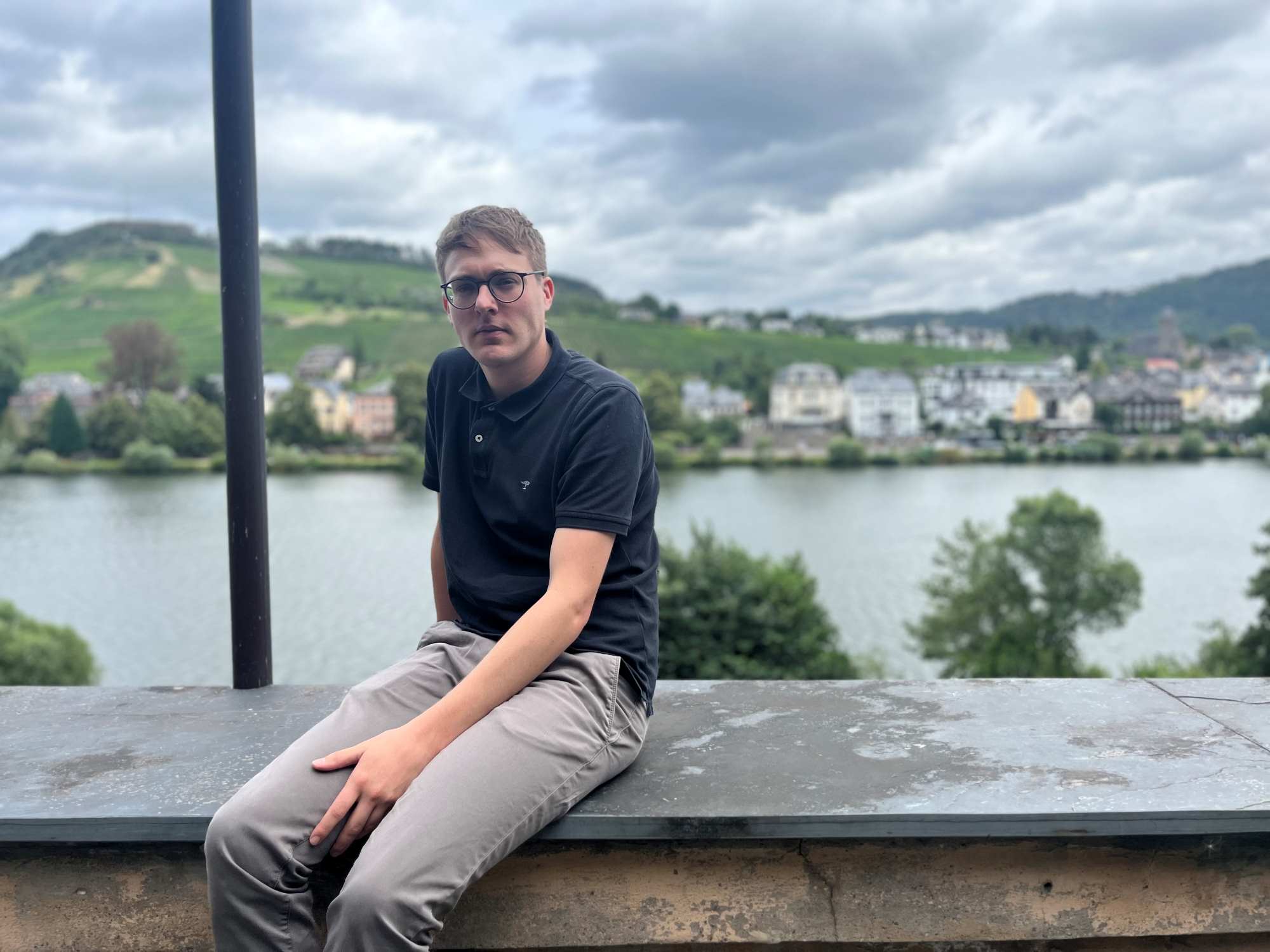The new releases from Vollenweider – the 2022 Prädikats and one Grand Cru dry from 2021 (the Schimbock) – have arrived.
Now we could just ignore the multitude of complex and difficult issues woven into the context of these wines – friendship, life, death, transition, style, and fame – but that seems foolhardy. I don’t want to bury my head in the sand and pretend that everything is the same.
Everything is not the same.

On July 22nd, 2022, Daniel Vollenweider died and his partner in the business, Moritz Hoffmann, took over. While the 2022 vintage is not all Moritz’s work, in reality, it mostly is. Yet the more complicated truth is that Moritz’s style and influence goes back further. I think it’s safe to say that Moritz’s hand was the dominant force from the 2019 vintage on.
Daniel was diagnosed with stage four cancer in the spring of 2019; almost immediately he went into chemotherapy and the fall of 2019 was a difficult time for him. It was a good vintage, ripe by historical standards and I think Daniel had the call as per the pick dates, yet much of the actual harvest and the decisions in the cellar were made by Moritz. The complicated truth is that Daniel trusted Moritz… and Daniel was simply fighting for his life. I’m not 100% privy to the exact schedules of Daniel’s chemotherapy, but I do know enough about chemotherapy to know it is a cycle of harsh, body-battering treatment, followed by (hopefully) increased strength and healing. By 2020 the two agreed that Moritz would be free to make more and more decisions. Part of this story is one of Daniel’s increasing absences due to treatment and treatment-related fatigue. But the other part of this story is Daniel’s accepting that, going forward, Moritz would be the boss – that for the estate to truly grow into the future, Daniel had to accept Moritz’s vision for this future.
So if 2019 was the beginning of Moritz’s wines at Vollenweider, his signature and influence grew profoundly in both 2020 and in 2021. For both vintages, Moritz made most of the calls as per the pick dates and did most of the cellar work. Daniel was often simply too sick. In other words, these are essentially Moritz’s wines. For the 2022 vintage, Daniel was with us for only half the year. He was not there for the harvest.
The question, then, is the following: How specifically has Moritz influenced the estate and the style of the wines? There are a number of significant changes. First, I think Moritz prefers a more linear style of wine. The heart-thumping acidity at chez Vollenweider was never a question; Daniel simply liked perhaps a bit more belly fat, a little more swagger. Moritz has polished down some of these more baroque shapes. This means in many cases Moritz is picking a few days earlier than Daniel might have. In the cellar there is more direct pressing and/or shorter maceration times, depending on the specifics of the vintage. There is perhaps less lees contact, when appropriate.
For those of you tasting with attention over the past four vintages, you have perhaps noticed this stylistic change. For me, it has been thrilling to watch… to taste. Moritz has discipline and rigor; but he also has the touch (Moritz was born and raised in Alf, the village that Ulli Stein currently lives in – is there magic there?). For me, the dry wines are staggeringly good – the best they have ever been. The Prädikat wines are simply different, though the stylistic and qualitative differences are less dramatic. Many have said, myself included, that these last few vintages have been among the best the estate has ever produced.
At this moment, I have to say I believe this is true. Yet the Moselle of 2023 is not the Moselle of 1999, when Daniel first looked up at the tiny parcels he had just bought in the Goldgrube vineyard. The weather, the climate has changed. But fashion and style have changed too. We have changed.
It’s impossible for me to honestly compare the 2004 Kabinett or Spätlese I drank in awe in 2006, with Moritz’s stunning Goldgrube Grand Cru dry wine from 2020 that I drank last year. More than a little humility is in order when talking about different eras; time makes a fool of us all in so many ways.
My goal here is not to paint a simple picture; what I want is to articulate the human intricacies of a complicated moment. As I wrote in my tribute to Daniel, I always considered him a giant of the Moselle. There is no minimizing what he accomplished, neither the greatness of his wines nor the legacy of an outsider coming into the Moselle to work its forgotten cliff-vineyards. It’s a legacy that thrives today, with outsiders like Philip Lardot, Jakob Tennstedt or Julien Renard coming to the Moselle to plant their own flag.
Yet I also want to give Moritz credit where credit is due. Not only has he very quickly taken the mantle at a rather storied estate with hard-work, integrity and honesty, not only has he made stunning wines in his own style, he has done so while having to watch his friend suffer and eventually succumb to cancer. He’s had to mourn with Daniel’s parents (who remain involved with the estate) and friends, while making the wines that bear Daniel’s name… and now the wines that continue through Moritz alone.
I think the current releases, the state of the estate as it were, would make Daniel very happy. The triumphs of the past few vintages represent Moritz’s successes – but they also reflect Daniel’s wisdom. Daniel had unwavering confidence in Moritz. Moritz, for his part, had unwavering confidence in Daniel’s judgement.
And this confidence, internalized, is without question one of the final gifts Daniel gave Moritz. And with these new Vollenweider wines, you can taste it… this gift.

Moritz Hoffmann photographed in July of 2023.